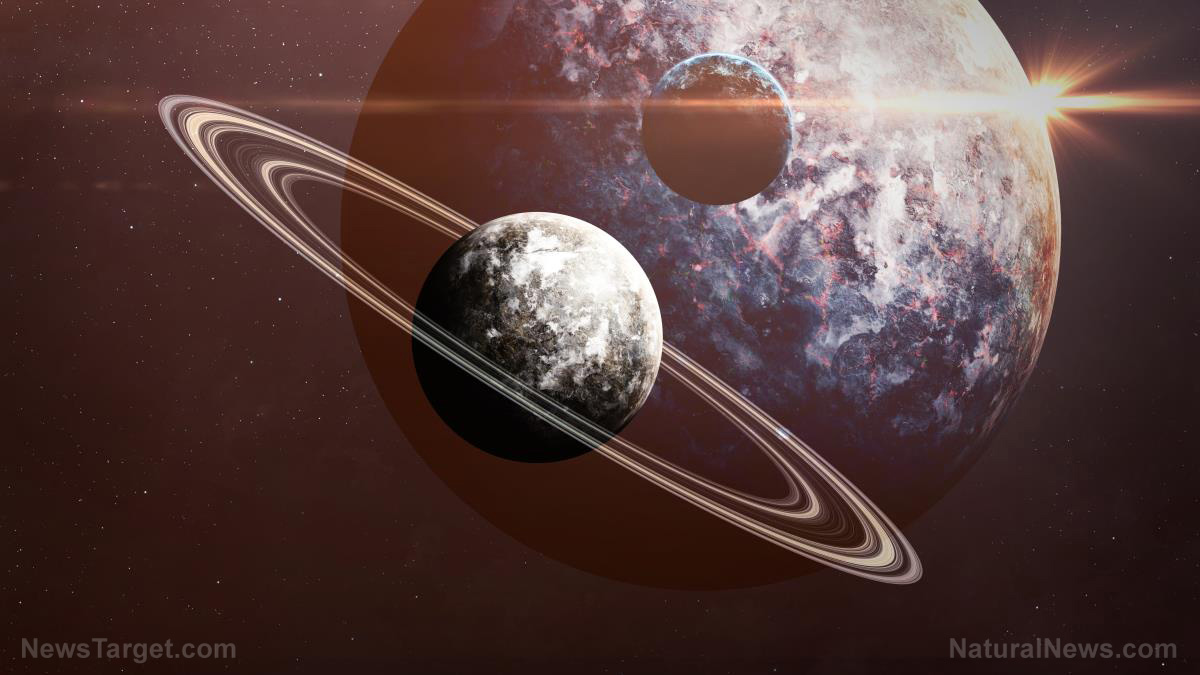Beyond oxygen: Looking for possible alien life that may not require an atmosphere with oxygen
02/03/2018 / By Frances Bloomfield

The presence or absence of oxygen can determine whether or not a planet can support life. It’s a strategy that many alien life hunters continue to use until this day. It holds true for our very own planet. However, a recent study has put forth the bold suggestion of looking for two other gases when seeking out signs of life. These gases, reports Space.com, are methane and carbon dioxide.
“We need to look for fairly abundant methane and carbon dioxide on a world that has liquid water at its surface, and find an absence of carbon monoxide,” David Catling, co-author of the study, told Newswise.com. “Our study shows that this combination would be a compelling sign of life. What’s exciting is that our suggestion is doable, and may lead to the historic discovery of an extraterrestrial biosphere in the not-too-distant future.”
The idea behind this came from no other place than the Earth. Specifically, the Earth billions of years ago when its atmosphere was composed of various kinds of gases. Estimates put the build-up of atmospheric oxygen at 2.5 billion years, and it’s eventual peak at 600 million years ago. Included in the mixture of gases would be carbon dioxide and methane which, when detected without carbon monoxide, may signal the existence of life. This is because carbon monoxide is eaten by microbes, so an abundance of this gas would be indicative of a planet without biology.
A great amount of carbon dioxide and methane would be different, however. Carbon dioxide holds oxygen, while methane has hydrogen. As such, carbon dioxide is carbon’s most oxidized state while methane is the least. Having these two together is unusual and difficult to produce without life. Although methane can be generated via non-biological processes, the researchers explained that having elevated levels of atmospheric methane would be a near-impossibility without biological organisms.
“Life that makes methane uses a simple metabolism, is ubiquitous, and has been around through much of Earth’s history,” explained corresponding author Joshua Krissansen-Totton. “It’s an easy thing to do so it’s potentially more common than oxygen-producing life. This is definitely something we should be looking for as new telescopes come online.” (Related: The search for Earth II: Three new French telescopes are searching the stars for another planet like ours.)
And Krissansen-Totton has a very good point. The James Webb Space Telescope — already being touted as a key tool in discovering alien life — is unable to detect oxygen due to being tuned for infrared. This makes it excel at observing ancient galaxies and stars, but renders the telescope incapable of catching oxygen. The same can’t be said for other gases.
Speaking to ScientificAmerican.com, Nikole Lewis, project scientist at the Space Telescope Science Institute, stated that the telescope could spot atmospheric carbon dioxide, methane, and carbon monoxide on planets surrounding red dwarf stars. “Webb can achieve the required precision to detect the molecules in the atmospheres of planets like those in the TRAPPIST-1 system,” said Lewis.
On this, Catling noted that it would still be difficult to determine whether the methane was the result of biological processes or major natural events like volcanic eruptions. Though he added that the telescope could still be useful in the long run, particularly when the work of him and colleagues were taken into consideration. “Webb probably has to get lucky to find life, but you never know, so this is potentially exciting for astrobiology. We want to make more people aware that there’s more to looking for life than looking for oxygen,” he remarked.
Want to read up on more news stories about space? Check out Cosmic.news.
Sources include:
Tagged Under: alien life, astronomy, atmosphere, biology, carbon dioxide, carbon monoxide, Chemistry, Methane, Space, space exploration, space science




















